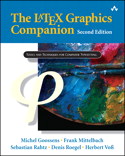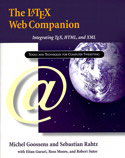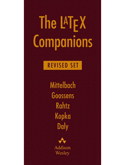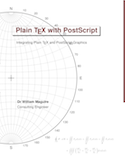
The LaTeX typesetting system remains a popular choice for typesetting a wide variety of documents, from papers, journal articles, and presentations to books, especially those that include technical text or demand high-quality composition. This book is the most comprehensive guide to making illustrations in LaTeX documents, and it has been completely revised and expanded to include the latest developments in LaTeX graphics. The authors describe the most widely used packages, and provide hundreds of solutions to the most commonly encountered LaTeX illustration problems.
A discount for this book is available.

This book shows how you can publish LaTeX documents on the web. LaTeX was born of the scientist's need to prepare well-formatted information, particularly with pictures and mathematics included; the web was born of the scientist's need to communicate information electronically. Until now, it has been difficult to find solutions that address both needs. HTML and today's Web browsers deal inadequately with the nontextual components of scientific documents. This book, at last, describes tools and techniques for transforming LaTeX sources into web formats for electronic publication, and for transforming web sources into LaTeX documents for optimal printing.
A discount for this book is available.

This attractively priced boxed set
comprises four authoritative books on the LaTeX software system for
typesetting documents. Because LaTeX is especially good for
technical documents and is freely available for almost any computer
system, it has become a lingua franca of the scientific world.
Whether you are new to LaTeX or want to be sure that your LaTeX
library is current and complete, you will find a useful place for
this set on your reference shelf.
A discount for this book is available.

The book outlines a collection of the author's favourite TeX macros and PostScript procedures, which he has developed over the past three years. The book avoids the more esoteric aspects of plain TeX and covers macros totalling less than 1000 lines that can be used to produce a wide range of documents (including the book itself). Plain TeX offers the greatest flexibility in controlling font sizes, page layout and control of headers and footers without some of the constraints that are imposed by LaTeX packages.
A discount for this book (was) available.